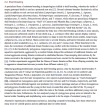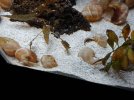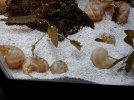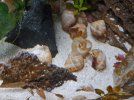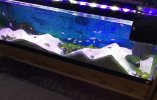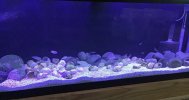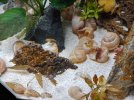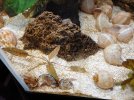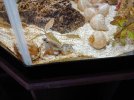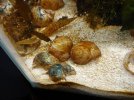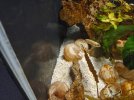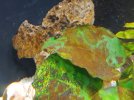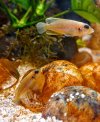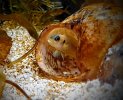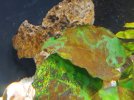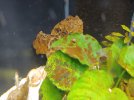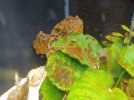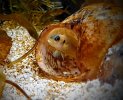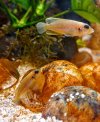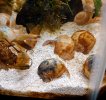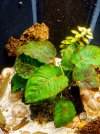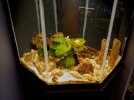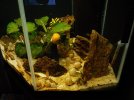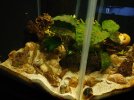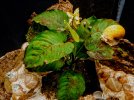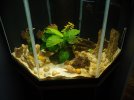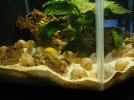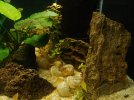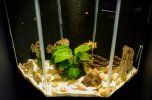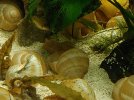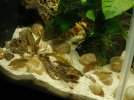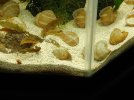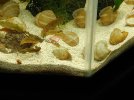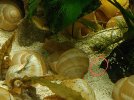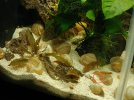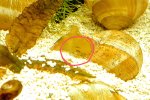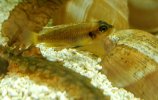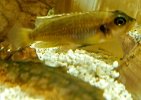John58Ford
Well-Known Member
So on the 12th I picked up a few ocy from another member, and this will be the photo journey of a pair (maybe trio) going through their own bulldozing process to (hopefully) start a colony.
Reference full tank photo on day 5, clear water, calcium and magnesium buffer precipitate still on plants, feeding.
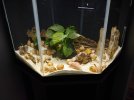
Day 4: Breeding behavior starts.
Female flashing fins and colors near entrance of a shell:
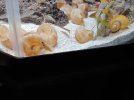
Alpha noticed and follows:
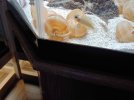
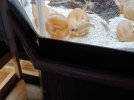
They were in and out of this shell all day together.
Day 5:
Female guarding shell, burying entrance.
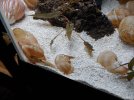
Throughout this log I will update as adjustments are made to the set up but here's the basics:
44 gallon pent corner
18"x10"x2.5" 30ppi faux corner matten
530 GPH pump turned to minimum flow pushing dual rain bars across the top and down the front flow pattern.
3" deep argonite mixed with hth PFS.
A bunch of escargot shells, some plants, super cool rocks.
Moving from seachem buffers to diy mix with water changes.
44 gallon pent corner
18"x10"x2.5" 30ppi faux corner matten
530 GPH pump turned to minimum flow pushing dual rain bars across the top and down the front flow pattern.
3" deep argonite mixed with hth PFS.
A bunch of escargot shells, some plants, super cool rocks.
Moving from seachem buffers to diy mix with water changes.
Reference full tank photo on day 5, clear water, calcium and magnesium buffer precipitate still on plants, feeding.

Day 4: Breeding behavior starts.
Female flashing fins and colors near entrance of a shell:

Alpha noticed and follows:


They were in and out of this shell all day together.
Day 5:
Female guarding shell, burying entrance.

I suspect this to be a trio, notice the other two shells being buried near by. There is a smaller (suspected) female burying the other two and coming out occasionally to make displays. In one days time these two other shells have gone from fully exposed to 1/3 buried. My other Shell dweller colony has buried the shells until there is just a funnel of sand into the mouth of the shell, I think this is when they feel the safest. I believe her to be female as the alpha is now on patrol in this front right corner and chasing the others away. In the group there is another large female that has taken the back right near the filter, two smaller fish have not claimed any territory. I believe them to be young males and as such will not take territory until mature enough to fight for it. The Calvus has taken over the cave zone I set up for him in the back left. I believe this to be why the alpha zone is in the front right, and nothing is set up in the front left yet.

